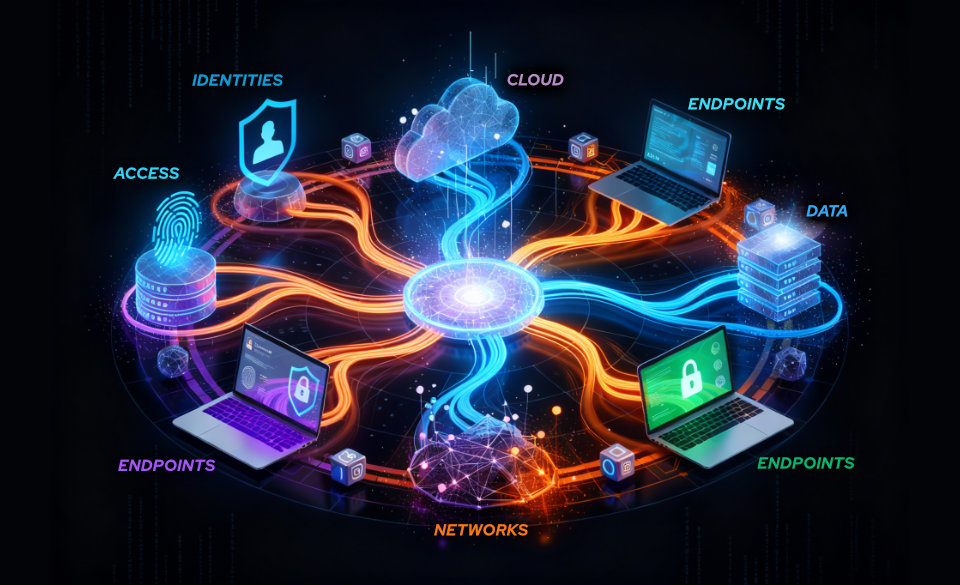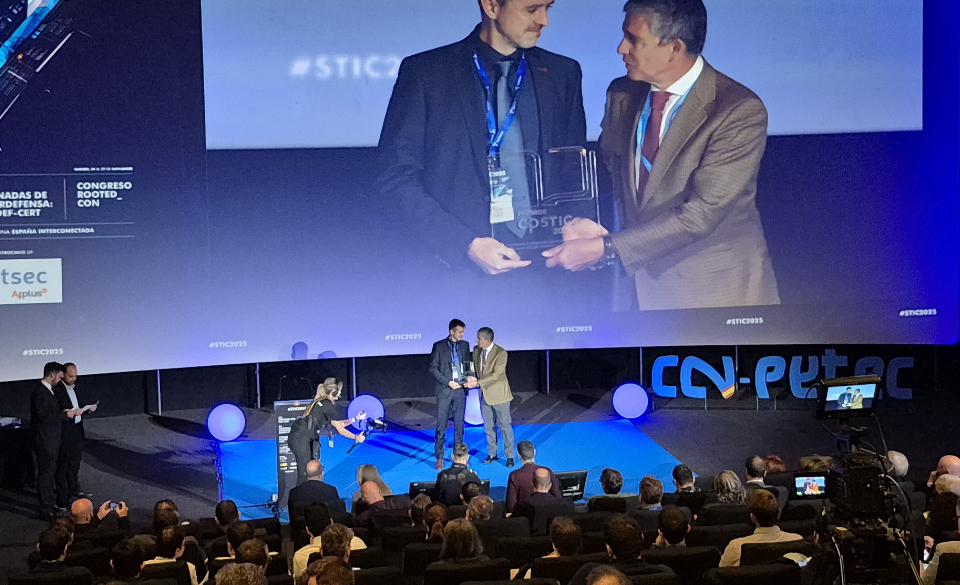
Cybersecurity in the Supply Chain
13 de March de 2025
Quantum Computing and Cybersecurity: The True Great Revolution
27 de March de 2025In the context of modern IT infrastructures, organizations face critical decisions on how to manage and secure their information systems. Depending on business needs, budget, and operational requirements, companies may opt for on-premises, cloud, or hybrid IT environments. Each option offers distinct advantages but also presents unique security challenges. Below, we explore these IT environments and their associated risks.
On-Premises Environment
An on-premises environment refers to IT infrastructure physically located within an organization’s facilities. All servers, databases, networks, applications, and other IT assets are managed and maintained internally by the organization’s IT staff. While this model provides full control over infrastructure and data, it also requires the organization to assume full responsibility for security, availability, and performance.
Advantages:
- Full control: The organization has complete authority over its infrastructure and resources.
- Customization: Solutions can be tailored to the specific needs of the company.
- Regulatory compliance: Organizations in highly regulated sectors (e.g., government, finance) may find it easier to meet compliance requirements in an on-premises environment.
Common attacks:
- Insider threats: On-premises systems are more exposed to internal attacks, especially without strict access and permission controls. Employees with privileged access are often targeted.
- Ransomware: A prevalent risk where critical organizational data is encrypted. Without strong backup and recovery plans, ransomware can have devastating impacts.
- Unauthorized access: Local networks are vulnerable without robust authentication controls, such as multi-factor authentication (MFA) and clearly defined access policies.
- Outdated software and hardware: Organizations are responsible for timely updates and patching. Zero-day vulnerabilities can be exploited if patches are not applied promptly.
- Lateral movement: Poor network segmentation and access controls allow attackers to move freely within the internal network.
Security measures:
- Privileged Access Management (PAM): Implement solutions to restrict and manage access to critical systems.
- Firewalls and network segmentation: Use segmentation and firewall rules to prevent lateral movement within the network.
- Backups and disaster recovery tests: Ensure regular backups and test recovery procedures to mitigate ransomware impacts.
Cloud Environment
A cloud environment utilizes IT services provided via the internet, where resources such as servers, storage, databases, and applications are hosted by external providers like Amazon Web Services (AWS), Microsoft Azure, or Google Cloud.
Advantages:
- Scalability: Resources can be scaled flexibly based on business needs, optimizing usage and reducing operational costs.
- Lower upfront costs: Companies avoid large capital investments in physical infrastructure by switching to operational, consumption-based expenses.
- High availability: Cloud providers offer built-in redundancy, ensuring high service uptime and resilience to failures.
Common attacks:
- Unauthorized access: Poorly managed identities and access control can allow attackers to exploit compromised credentials or misconfigurations.
- Data leaks: Misconfigured cloud services may expose sensitive data, such as open Amazon S3 buckets.
- Distributed Denial of Service (DDoS): Despite provider-level protections, large-scale DDoS attacks may still affect service availability.
- Management interface vulnerabilities: Insecure cloud management portals can be exploited, providing attackers with control over the infrastructure.
Security measures:
- End-to-end encryption: Ensure data is encrypted both in transit and at rest.
- Multi-factor authentication (MFA): Enforce MFA on all cloud accounts to prevent unauthorized access.
- Continuous configuration monitoring: Deploy cloud security tools to detect and alert on misconfigurations or vulnerabilities.
Hybrid Environment
A hybrid environment combines on-premises infrastructure with cloud services. This model allows organizations to leverage the control of on-premises systems and the flexibility of the cloud.
Advantages:
- Flexibility: Sensitive data can remain on-premises while cloud services support less critical applications.
- Cost optimization: Enables gradual cloud adoption, reducing operational costs without fully relinquishing on-premises assets.
- Scalability and control: Hybrid models allow for scalable operations while maintaining control over critical infrastructure.
Common attacks:
- Data interception in transit: Data flowing between on-premises and cloud environments can be intercepted if secure channels (e.g., VPN, TLS) are not used.
- Loss of visibility: Managing multiple environments may reduce the ability to monitor threats and detect incidents without unified monitoring.
- Policy inconsistencies: Misaligned security policies across cloud and on-premises environments may introduce vulnerabilities.
- Integration risks: Poorly secured interfaces between local and cloud environments can be exploited by attackers.
Security measures:
- Unified visibility: Implement monitoring platforms that provide a comprehensive view of both on-premises and cloud assets.
- Consistent security policies: Enforce uniform security policies across environments, including identity management, access controls, and auditing.
- Identity and Access Management (IAM): Integrate IAM solutions across hybrid environments to manage and audit access.
Conclusion
Each IT environments —on-premises, cloud, and hybrid— presents specific security advantages and challenges. Protecting these environments requires a tailored strategy aligned with each model’s characteristics. To minimize risks and ensure data integrity and availability, organizations must implement advanced security measures, such as privileged access management, data encryption, and continuous monitoring.
At Cosmikal, we deliver advanced solutions to protect access to critical systems, whether hosted on-premises or in the cloud. Securing hybrid and cloud environments requires a comprehensive approach that integrates best practices in access management, continuous monitoring, and data protection. With Endurance, we help organizations effectively secure their assets, ensuring a robust and resilient IT environments regardless of architecture.




